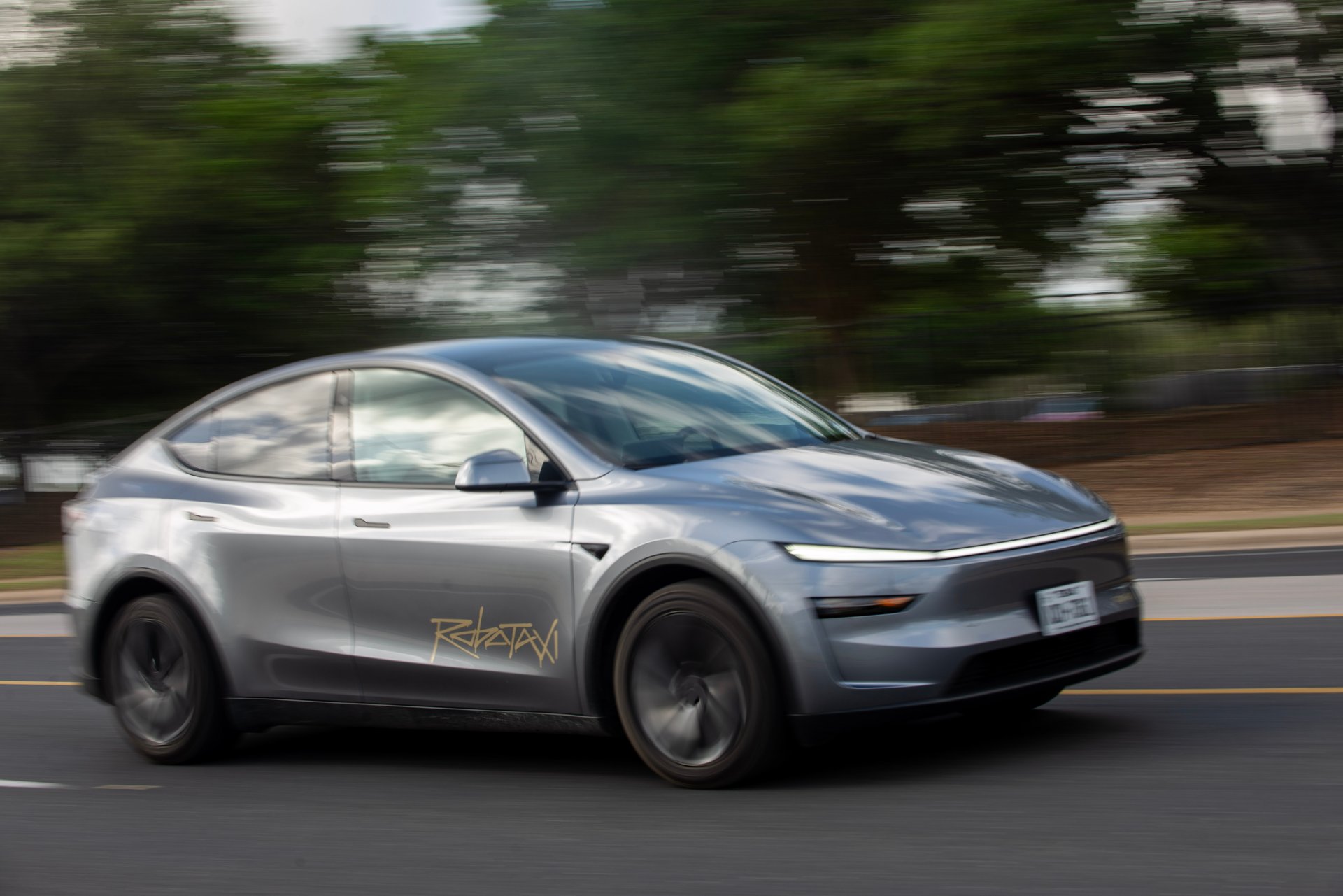🌎 Robotaxis or bust
Plus: A crude awakening.

Tim Goessman/Bloomberg via Getty Images
Good morning, Quartz readers!
Suggested Reading
Here’s what you need to know
Fare enough, Tesla. The company launched Elon Musk’s long-promised robotaxis over the weekend, and Wall Street’s reaction sent the company’s shares up around 10%.
Geopolitical whiplash. Markets are on edge after President Donald Trump ordered military strikes on three Iranian nuclear sites, and his move could have major short-term effects.
Trump tries to barrel through. He demanded “everyone” keep oil prices down after the U.S.’ attack, writing that people are “playing right into the hands of the enemy.”
Cured of red tape? Health insurance companies have pledged to streamline a controversial “prior authorization” process that some say has led to delays in medical treatments.
July could be a cut above. Another Fed governor has backed a July interest rate cut from the central bank if inflation from tariffs remains lower than expected (or “contained”).
Slim pickings. Novo Nordisk is ending its partnership with Hims & Hers because of “deceptive promotion and selling of illegitimate, knockoff versions” of its weight-loss drug Wegovy.
Driving the narrative
Tesla has always sold more than just cars — it has sold a story. And this weekend, Elon Musk tried to write the next chapter. After a rough year of sagging EV sales, thinning margins, and a CEO whose Twitter feed often outpaces his production line, Tesla is betting big on a new lane: robotaxis. Over the weekend in Austin, the company (finally) unveiled its first autonomous pilot — geofenced Model Ys, $4.20 fares (yes, really), and a babysitter in the front seat, just in case.
The robotaxis aren’t fully autonomous, widely deployed, or making money. But for Tesla, they’re mission-critical. A large chunk of Tesla’s valuation — up to 60%, by some estimates — hinges on Musk’s autonomous dream and Tesla’s AI future working. Eventually. At scale. For real. Robotaxis are no longer a side project — they’re the ultimate business model. And for a company whose market cap floats on more hype than horsepower, the pressure is... non-autonomous.
Shares surged after the launch, but analysts are split: Is this the future of transportation or just another glossy beta test wrapped in Silicon Valley optimism? If robotaxis work, Tesla becomes a mobility-as-a-service juggernaut, and if autonomy scales, Tesla goes from carmaker to platform. If not, it’s just a car company with an expensive CEO and aging models that’s stuck pushing deeply discounted EVs in a crowded market with cooling hype and shrinking profits. Meanwhile, competitors such as Waymo and Zoox are already in the fast lane, running actual driverless fleets with more polish and fewer PR flames.
The big question isn’t, “Can the robotaxi drive itself?” It’s “Can it drive Tesla’s future?” Either way, one thing’s clear: The driver may be optional, but the stakes are not. Quartz’s Shannon Carroll has more on why the robotaxi isn’t just a ride — it’s a rescue mission.
Strait to the point
The Strait of Hormuz might be narrow, but its geopolitical significance is anything but. In the wake of U.S. involvement in the Israel-Iran war, a dangerous non-nuclear card is back on Iran’s table: closing the Strait of Hormuz, the maritime artery through which one-fifth of the world’s oil flows.
If you forgot your high-school geography, the Strait of Hormuz is the 33-kilometer stretch of ocean between the Persian Gulf and the Arabian Sea. It also happens to be the jugular of the global oil trade. If traffic there stops, the economic whiplash could be severe. Oil prices, currently hovering around a relatively tame $70 a barrel, could shoot up to $120, according to analysts at JPMorgan and ING. That means more than just pain at the pump — it could mean inflation revival, skyrocketing shipping costs, and a trickle-down economic migraine that doesn’t trickle so much as flood.
The Iranian parliament has already greenlit a blockade. The final call, however, lies with Iran’s Supreme National Security Council. Militarily, Iran doesn’t have the muscle to fully close the Strait (the U.S. Fifth Fleet is parked right there), but the country does reportedly have 27 submarines, an arsenal of sea mines, and anti-ship cruise missiles. In short, Iran can’t shut the door, but it can make enough noise to shake global oil prices.
Iran, of course, would suffer, too. Blocking the Strait would likely cut off its revenue pipeline and alienate its biggest customer: China, which buys up to 90% of its oil. U.S. officials have said closing the Strait would be “economic suicide.” Secretary of State Marco Rubio even tried to outsource the pressure to Beijing, warning that a blockade would tank China’s economy “a lot worse than ours.” He warned Iran that such a move “would be a massive escalation that would merit a response not just by us — but from others.”
Whether Iran is bluffing or serious remains the million-barrel question — but in a region already reeling from violence, this could be the spark that ignites something far larger. Quartz’s Michael Barclay has more on the geopolitics of narrow waterways and the wide-scale consequences.
Our best wishes on a safe start to the day. Send any news, comments, and more to [email protected].